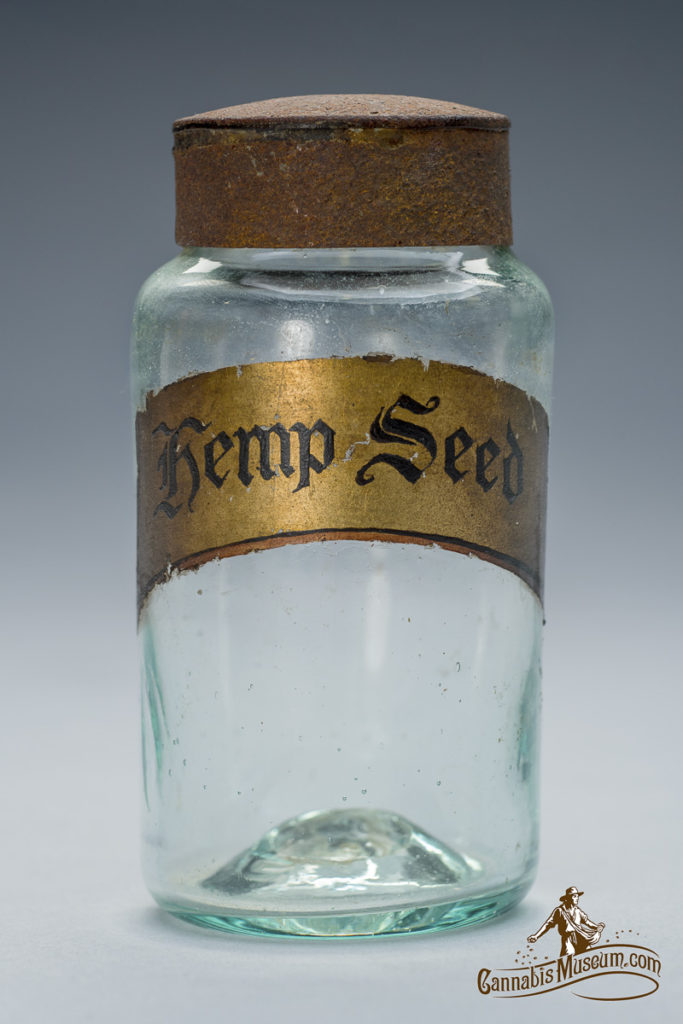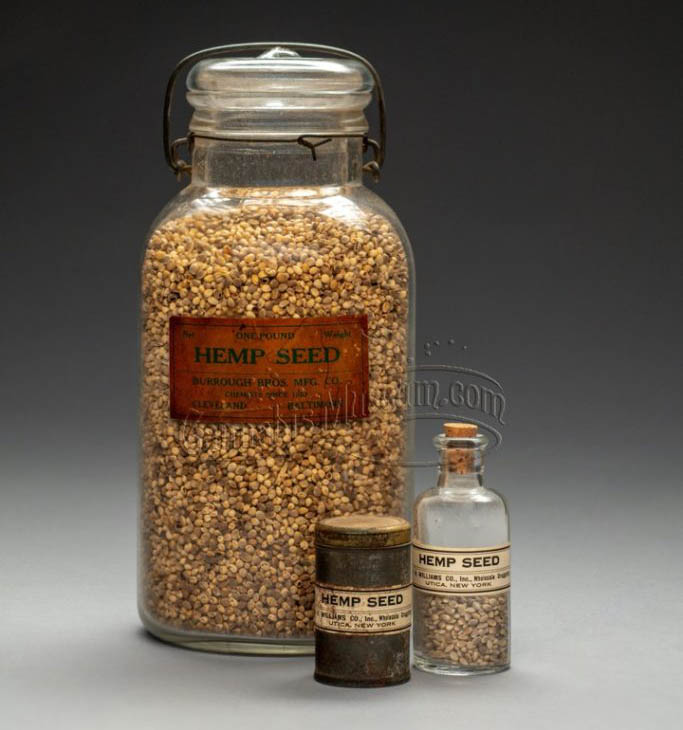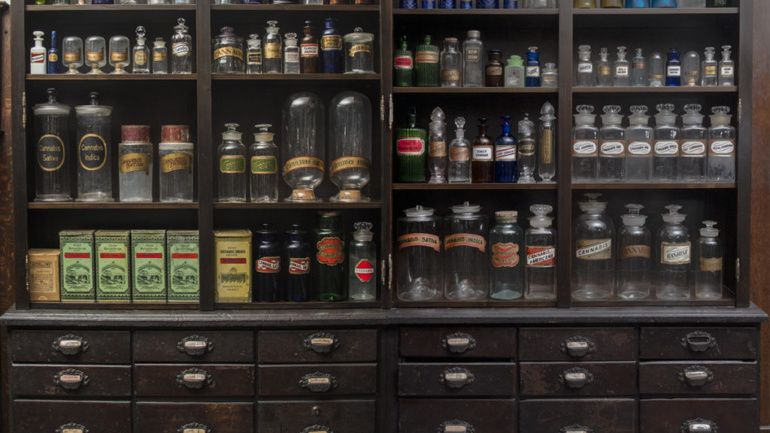Hemp Seeds
Hemp seed has been in continuous use for tens of thousands of years. It was prized as a human food and medicine as well as an excellent feed for farm stock. It proved to be a protein, oil and mineral-rich food source. Hemp seeds were also used medicinally for a range of prescriptions, laxatives, corn plasters and dyes.
The hemp seed used in early American agriculture came from European stock. In 1753, Carl Linnaeus, the father of botanical taxonomy, classified European hemp as Cannabis sativa. Cannabis sativa was typically tall and lanky with thin leaves. These historical sativa varieties of the plant had high levels of Cannabidiol, or CBD, and only traces of Tetrahydrocannabinol, abbreviated as THC. THC is the principal active psychoactive chemical in the plant.

This is a typical early American apothecary jar. It took incredible skill to blow this form without the aid of a mold. In 1830 glass was a rare oddity, Glass jars became the attraction and eventually a symbol of the early American apothecary shops.



